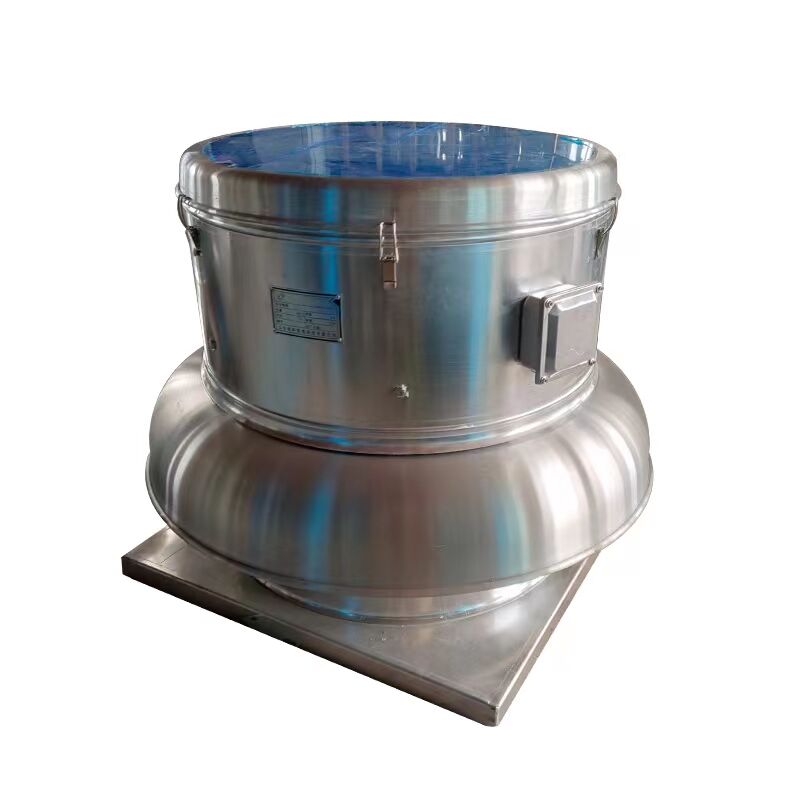Understanding the Role of the Food Truck Fan in Kitchen Airflow and Safety
How the Food Truck Fan Enhances Exhaust Hood and Ventilation System Efficiency
The fan in a food truck acts as the main power source for the kitchen ventilation system, drawing heat, smoke, and greasy air through the exhaust hood and expelling it from the vehicle. When running at around 150 to 250 cubic feet per minute, these fans stop bad air from building up inside where it could spoil food and pose health risks to workers. With proper duct connections, most models manage to clear about 90 percent of airborne mess within just 10 to 15 minutes straight operation time, which helps meet those important NFPA 96 requirements for safe cooking environments. Regular maintenance makes a big difference too, cutting down overall system stress by roughly a quarter and keeping everything working reliably over time.
The Consequences of Poor Airflow on Hygiene, Safety, and Compliance
A drop in fan performance leads to all sorts of problems piling up fast. The grease builds up in those hood filters and through the ductwork at about three to five times the normal rate, which not only creates serious fire risks but also makes air circulation worse throughout the space. We're talking about carbon dioxide levels shooting past OSHA's 5,000 ppm limit within just half an hour when cooking happens in poorly ventilated areas. Looking at numbers from the National Fire Protection Association in 2022 shows that almost 4 out of every 10 mobile kitchen fires actually start because of failed ventilation systems. And for kitchens whose equipment falls short of local health regulations? They end up getting cited during inspections at a rate 22 percent higher than compliant establishments, usually leading to expensive shutdown periods while necessary repairs get done.
Real-World Impact: Case Study on Air Quality After Upgrading the Food Truck Fan
Twelve food trucks operating around Portland recently switched out their old fans for high torque centrifugal models, and the results were pretty impressive. Grease buildup on hoods decreased by about forty percent after making this change. The particulate matter levels, specifically PM2.5, saw an even bigger drop going from 35 micrograms per cubic meter down to just 12 micrograms. That's actually under the Environmental Protection Agency's standard for safe exposure which stands at 35 micrograms per cubic meter for a full day. Each truck owner spent roughly two thousand five hundred dollars on this upgrade, but it paid off handsomely. Service technicians reported way fewer problems with these fans during regular maintenance checks. Over eighteen months, there was a dramatic 63% decline in repair requests related to fan issues. So not only does this upgrade make kitchens cleaner, it also saves time and money in the long run while keeping everyone breathing easier.
Proactive Maintenance Schedules to Extend Food Truck Fan Lifespan
Designing a Routine Cleaning Schedule for Consistent Fan Performance
According to recent HVAC industry reports from 2023, when grease builds up on fans it can cut down airflow efficiency by nearly half. That's why having a good cleaning schedule matters so much for maintenance crews. Most facilities find success with something like wiping down outside surfaces daily, doing a thorough clean inside once a week, and applying degreaser every other week or so. Facilities that stick to this kind of routine tend to replace motors about 30% less frequently over a three year period. For day to day operations, workers should make sure to clear out blade debris at the end of each shift, give those grease traps a good flush around every two days of operation, and check those exhaust duct seals at least once a month for wear and tear.
Monthly Maintenance Checklist: Key Components to Inspect in Your Food Truck Fan
Regular inspections prevent small issues from becoming major failures. Focus on these critical areas each month:
| Component | Inspection Focus | Red Flags |
|---|---|---|
| Motor Housing | Vibration levels | Unusual noises >75 dB |
| Blade Assembly | Grease accumulation | Imbalance during rotation |
| Electrical Wiring | Insulation integrity | Fraying or discoloration |
One Thai seafood processor extended fan lifespan by 22 months using pH-neutral cleansers and consistent monthly checks, avoiding the damage caused by harsh chemical cleaners.
Data-Driven Insight: 70% of Failures Linked to Inconsistent Food Truck Fan Maintenance
According to the National Restaurant Association's 2023 equipment report, most fan failures happen because people don't maintain them properly. Restaurants that check their systems every month end up saving around two thousand three hundred dollars each year on repairs instead of waiting until something breaks down. And there's another good reason to stay on top of maintenance: fire safety. The NFPA has some pretty alarming numbers here too. Their safety data shows that about eight out of ten food truck ventilation fires actually start in fans that haven't been taken care of right.
Integrating Food Truck Fan Care into Daily Sanitation and Operational Routines
Daily Cleaning Protocols to Prevent Grease Accumulation in the Food Truck Fan
Keeping those fans clean every day really matters when it comes to stopping grease from building up, which causes about 44 percent of problems with kitchen equipment according to NSF International's report from last year. At the end of each workday, staff need to go through several steps: wiping the fan blades and surrounding areas with good quality degreaser solution, blowing out the motor vents with compressed air to get rid of all that grime, and making sure none of the filters are blocked. When done regularly like this instead of just once a week, restaurants actually see around 30% improvement in how well air moves through their systems. Plus, there's obviously less chance of something catching fire if everything stays properly maintained over time.
Best Practices for Coordinating Exhaust Hood and Ventilation Cleaning with Fan Maintenance
When fan maintenance gets done alongside exhaust hood cleaning, both safety and efficiency go up. The numbers from NFPA 2023 back this up pretty strongly actually - around two thirds of all food truck fires start right there in those dirty exhaust systems. That's why keeping things clean matters so much. For anyone running food trucks or commercial kitchens, doing a thorough check over 90 days makes sense. Look at how the hood baffles line up with what the fans are putting out, take readings on static pressure throughout the whole system, and don't forget to test how much power the motors pull when everything's running at full blast. Food service operators who get these maintenance steps in sync typically save about a quarter of their labor hours while staying on top of those important NFPA 96 requirements for kitchen ventilation systems.
Cost-Benefit of Preventive Food Truck Fan Maintenance for B2B Operators
Balancing Upfront Maintenance Costs with Long-Term Equipment Reliability
Putting money into preventive maintenance might seem costly at first glance, but it pays off handsomely in the long run. For businesses that take care of their fans regularly, the savings are impressive. Every dollar invested typically brings back three to four dollars saved through reduced breakdowns, improved air circulation, and equipment that lasts significantly longer maybe even twice as long in some cases. When companies skip these regular checkups, things start breaking down faster. Motors wear out quicker and components fail unexpectedly. Fixing these problems ends up costing anywhere from three to five times what proper maintenance would have cost in the first place. The math simply doesn't add up when shortcuts are taken.
| Maintenance Approach | Avg. Annual Cost | Downtime Risk | Lifespan Impact |
|---|---|---|---|
| Preventive | $800– $1,200 | 15% reduction | 5–7 years |
| Reactive | $2,500– $4,000 | 40% increase | 2–3 years |
Reducing Downtime and Repair Expenses Through Strategic Fan Care
The numbers don't lie when it comes to fan failures. Around seven out of ten breakdowns happen because maintenance just wasn't done regularly enough. When blades get clogged with grease or bearings wear down over time, these problems tend to cause unexpected shutdowns right when business is busiest. Companies typically lose between $120 and $200 every single hour their fans aren't running. On the flip side though, those who stick to regular monthly checks see a big difference. Emergency fixes drop by about half for them, and workers spend less time dealing with small problems that could have turned into expensive overhauls if left unchecked.
FAQ Section
Why is regular maintenance of food truck fans important?
Regular maintenance ensures efficient airflow in the kitchen, prevents grease buildup, and reduces the risk of fires and breakdowns, all while aiding compliance with safety standards.
How does upgrading a food truck fan improve air quality?
Upgrading to high torque centrifugal fans can reduce grease accumulation and lower particulate matter levels, resulting in improved air quality and fewer maintenance issues.
What are the consequences of poor airflow in food trucks?
Poor airflow leads to increased grease buildup, higher fire risks, carbon dioxide exceeding safe levels, and non-compliance with health regulations, potentially leading to expensive shutdowns.
How can I design an effective cleaning schedule for food truck fans?
A cleaning schedule should include daily wiping of surfaces, weekly internal cleaning, and bi-weekly application of degreaser, alongside routine inspections to maintain efficiency and prolong fan lifespan.
Table of Contents
- Understanding the Role of the Food Truck Fan in Kitchen Airflow and Safety
- Proactive Maintenance Schedules to Extend Food Truck Fan Lifespan
- Integrating Food Truck Fan Care into Daily Sanitation and Operational Routines
- Cost-Benefit of Preventive Food Truck Fan Maintenance for B2B Operators
- FAQ Section

